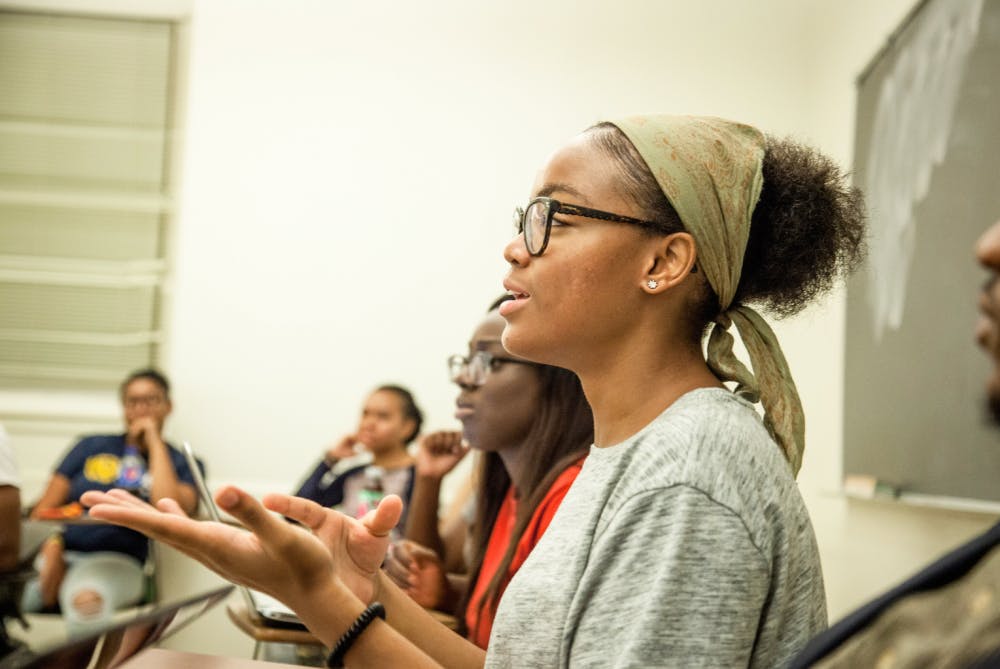By Yanaja Joyner
Correspondent
A simple mirror shattered harmful stereotypes and promoted self-love for the students who gathered in the Business Building on Sept. 26.
Fifty ShadeZ of Melanin, hosted by Zeta Phi Beta and the Black Student Union, addressed the problems of colorism and its impact relating to skin color.
The event was also sponsored by the Association of Students for Africa, Alpha Phi Alpha and the Haitian Students Association.
According to those in attendance, colorism is defined as people of color who discriminate against each other within their own race.

“Because of the political climate we live in, it’s important to talk about these topics instead of just sugar coating things,” said Enicely Mojica, a junior psychology major and Zeta Phi Beta’s president.
Meme Cisse, a senior sociology major and member of Zeta Phi Beta, opened the floor for discussion with one question: “Where did colorism start?”
The overall agreement in the room was that colorism doesn’t just mean differences in skin color, but the differences in hair type too.
From there, the audience began to share stories of their own experiences with colorism and why they believe it exists in today’s society.
Némy Thomas, a freshman psychology major, explained her understanding of colorism.
“When people think of light skin women as curly hair and exotic, that’s where the divide comes from,” Thomas said.
After the audience shared personal stories, the event took a turn toward colorism’s role in the media.
The topic began with Spike Lee’s 1988 film, “School Daze.”
The film was based on a historically black university and the divide between its students — those who immerse themselves in political rhetoric versus those who would rather maintain social order.

Students analyzed the musical battle scene in the film between darker skinned girls with natural hair, and lighter skinned girls with straighter hair. Although the film was released nearly 30 years ago, many agreed that the misconceptions still exist today.
“I feel that the normalization of terms such as light-skinned or dark-skinned and associating positive or negative traits with these terms is detrimental to society,” said Aaron Conyer, a junior philosophy major and co-chief financial officer of BSU.
Colorism in media was then used as a segway for overcoming harmful stereotypes.
One media example was Deedee Howard, a dark-skinned model that recreated ads that were shot from a Eurocentric perspective.
Another mention was Viola Davis, the first black woman to win an Emmy, a Tony and an Oscar.
After discussing the causes and examples of women that overcome colorism, the conversation shifted to its effects.
The most prominent effects discussed were the perceptions of beauty, which in turn, create the problems of low self-esteem and risk behavior such as skin bleaching.
At the end of the discussion, students were placed into small groups and handed a mirror.
Sarah Bennett, a junior English and elementary education double major and Zeta Phi Beta’s vice president, explained the activity.
The objective was to think of the first three words that described yourself as you looked into the mirror, according to Bennett. Then, the rest of the group gave their own ideas of what they thought.
At the end of the exercise, many students had tears in their eyes. Some said it was hard to look at themselves, while others mentioned the affirmations of others was overwhelming.
“It was a great program providing insight into some of the issues of colorism,” Conyer said.“The conversations today allows us to be more mindful when we are thinking about the weight of the terms and phrases we use.”







